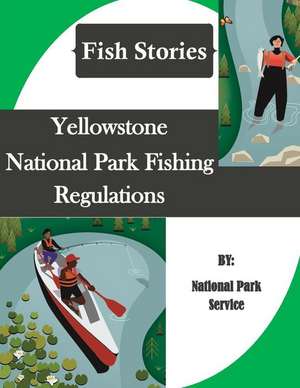Yellowstone National Park Fishing Regulations (Fish Stories)
Autor National Park Service Editat de Penny Hill Press Incen Limba Engleză Paperback
Preț: 80.68 lei
Nou
Puncte Express: 121
Preț estimativ în valută:
15.44€ • 16.03$ • 12.87£
15.44€ • 16.03$ • 12.87£
Carte disponibilă
Livrare economică 01-15 martie
Preluare comenzi: 021 569.72.76
Specificații
ISBN-13: 9781523454426
ISBN-10: 1523454423
Pagini: 26
Dimensiuni: 216 x 279 x 1 mm
Greutate: 0.09 kg
Editura: CreateSpace Independent Publishing Platform
ISBN-10: 1523454423
Pagini: 26
Dimensiuni: 216 x 279 x 1 mm
Greutate: 0.09 kg
Editura: CreateSpace Independent Publishing Platform
